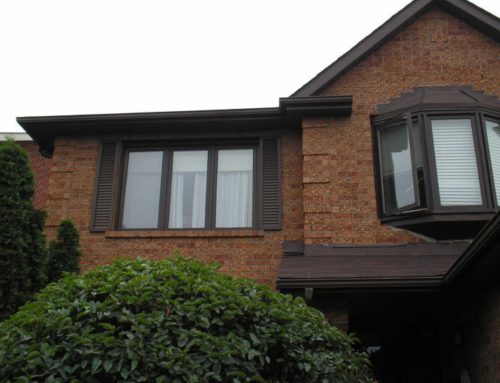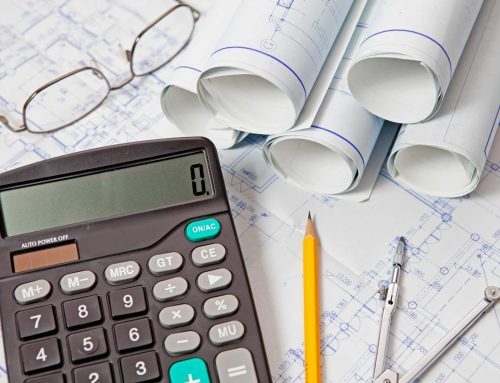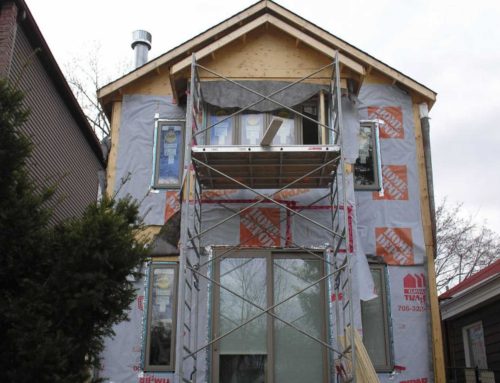When choosing exterior finishes, most homeowners focus on one thing: curb appeal. But what if the most beautiful design choices were also the smartest ones for your energy bills? True home design is not just about looking good—it is about performing brilliantly. A home’s siding and windows form its “envelope,” a single system responsible for both its appearance and its defence against the elements. A disconnected approach, where the siding is chosen separately from the windows, misses a huge opportunity for synergy.This can lead to a less cohesive look. While a future window replacement offers a great opportunity to upgrade and unify your home’s design, an integrated plan from the start is even better. This post will guide you through a purposeful design strategy, showing how coordinating siding and window styles can create a stunning exterior that actively improves insulation, lowers energy consumption, and enhances year-round comfort.
Siding: The Foundation of Your High-Performance Envelope
Siding is far more than a decorative layer; it is the home’s primary shield and a critical component of its insulation system. Different materials have different inherent insulating properties, known as R-values. For instance, insulated vinyl siding features a rigid foam backing that wraps the home in a continuous blanket of insulation. This design is highly effective at reducing “thermal bridging,” a process where heat escapes through the less-insulating wall studs. By creating this unbroken thermal barrier, the siding ensures a more consistent indoor temperature and reduces the strain on your heating and cooling systems. This is a clear example of how insulation plays a role in long-term efficiency, turning a simple exterior finish into an active energy-saving feature.
Fibre cement is another excellent choice. It is prized for its durability and dimensional stability. It will not warp, rot, or buckle when exposed to moisture or extreme temperatures. This prevents the formation of gaps and cracks that lead to air and moisture leaks over time. Wood offers excellent natural insulating qualities. However, it requires consistent maintenance like painting or staining to preserve its integrity and prevent energy-wasting gaps. The science of colour also plays a significant role. Lighter colours reflect solar radiation. This keeps walls cooler and reduces the air conditioner’s workload in the summer. Conversely, darker colours absorb solar heat, providing valuable passive heating in the winter. Modern solar-reflective pigments even allow for dark, rich colours without the extreme heat gain of the past, offering homeowners the best of both worlds.
Windows: The High-Tech Lenses of Your Home
It is best to view windows as sophisticated pieces of technology, not just as holes in the wall. They are designed to control heat, light, and air. The style of the window has a direct impact on its airtightness, specifically in how it opens and closes. Casement and awning windows are among the most efficient. They press the sash tightly against the frame when closed, creating a highly effective compression seal that minimizes air leakage. Double-hung and sliding windows were traditionally less airtight. However, modern designs have drastically improved their performance with advanced weatherstripping and interlocking meeting rails. For areas where ventilation is not needed, fixed or picture windows are the most efficient choice. They offer the tightest possible seal, providing maximum light with minimal energy loss.
Beyond the style, the technology within the glass is what truly drives performance. It is essential to understand the key features on an energy-performance label to make informed design choices that save on energy bills. Low-E (Low-Emissivity) coatings are invisible metallic layers that act as heat filters, blocking unwanted solar heat from entering in the summer and stopping valuable furnace heat from escaping in the winter. The spaces between the glass panes are often filled with dense, non-toxic gases like argon or krypton, which act as powerful insulators to slow heat transfer. Finally, the frame material is crucial. Insulated frames made from vinyl or fibreglass offer superior insulating properties compared to materials like aluminum, which can conduct heat and cold right through the frame, undermining the efficiency of the glass unit.
Design Synergy: Creating a Cohesive, High-Performance System
The ultimate goal is to bring both siding and windows together into a single, cohesive system where aesthetics and performance are in perfect harmony. For a “Cool & Coastal” look, ideal for homes that get a lot of direct sun, one might choose light-coloured insulated vinyl or fibre cement siding in shades of white, light grey, or sandy beige to reflect heat. This would be paired with high-performance windows that have advanced Low-E coatings specifically designed to block solar heat gain (indicated by a low Solar Heat Gain Coefficient). Crisp white or black window frames would complete this clean, modern, and airy aesthetic that feels cool and looks sharp, creating one of the perfect exterior pairings for a unified design.
The strategy shifts for a “Warm & Rustic” look, better suited for colder climates or wooded lots. Here, you can use medium-to-darker toned siding. Deep blues, forest greens, or warm greys absorb passive solar heat in the winter. Textural styles like fiber cement shakes or board-and-batten siding add to the rustic charm. Coordinate these with strategically placed windows. Windows on south-facing walls should have a slightly higher Solar Heat Gain Coefficient to welcome the winter sun. Pair them with high-insulation frames. Architectural styles can also guide these pairings. A Modern Farmhouse shines with classic white board-and-batten siding and black, grid-style double-hung windows. For a sleek contemporary look, use smooth, large-format fiber cement panels in a dark grey. Pair them with minimalist, thin-framed black casement windows to create a powerful, unified statement.
A Beautiful Home That Pays You Back
A home’s exterior should be designed as a single, intelligent system. The most successful designs are those where the siding and windows work together, both aesthetically and functionally. An upfront investment in a coordinated, high-performance exterior pays for itself over time. It delivers tangible monthly energy savings and provides superior indoor comfort by eliminating drafts and cold spots. This investment also significantly increases curb appeal and resale value. Move beyond thinking about siding and windows as separate purchases. Consult with a designer or contractor who understands building science. Design with purpose. Create a home that is not only beautiful to look at, but also a joy to live in and affordable to operate for years to come.






